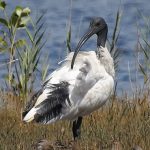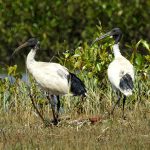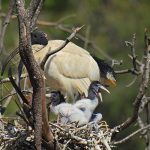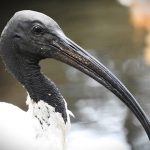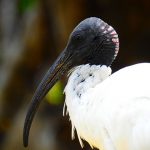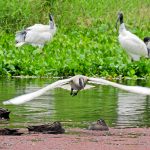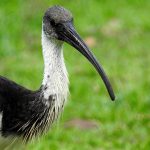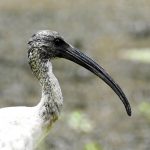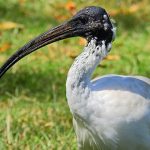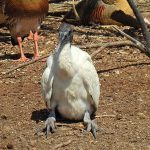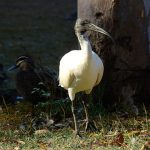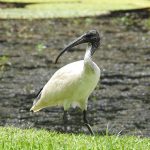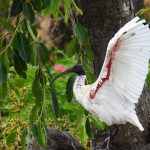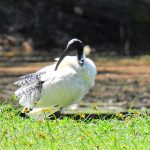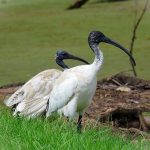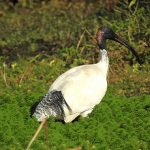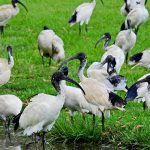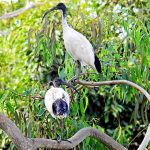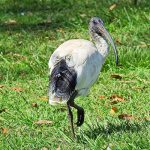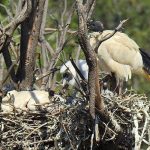AUSTRALIAN WHITE IBIS
The Australian white ibis is widespread across much of Australia. It is a large wading bird with predominantly white plumage. It has a long, slender, curved bill that is black and often stained with mud, as these birds frequently forage in wetlands and mudflats. The head and neck are featherless and are covered in black skin, which can change in color and become more vibrant during the breeding season. The legs are long and black, and the eyes are dark. They have an average lifespan of 28 years.
These ibises are highly adaptable and can be found in a variety of habitats, including urban areas, wetlands, swamps, riversides, lakes, and coastal regions. They are often seen foraging for food in parks, gardens, and even garbage dumps in urban environments.
Australian white ibises are known for their probing and probing for food in mud and shallow water. Their diet primarily consists of aquatic invertebrates, insects, crustaceans, small fish, and food scraps they find in urban areas. They are opportunistic feeders and can adapt to various food sources.
During the breeding season, Australian white ibises form breeding colonies in trees near wetlands or in dense reed beds. They build a platform nest made of sticks and reeds. They typically lay 2-3 eggs, and both parents take turns incubating the eggs and caring for the chicks.
The Australian white ibis is an adaptable bird species that has found ways to thrive in both natural and urban environments. In some Australian towns and cities, Australian white ibises have become a common sight and are often associated with urban areas. Once known as the Sacred ibis it is sadly now often referred to as a bin chicken, tip turkey or dumpster diver due to the habit of raiding rubbish bins for sustenance.

